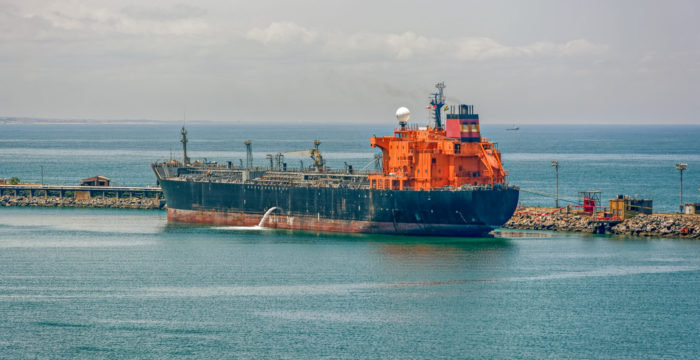Without a doubt 2020 has already been characterized by the COVID-19 pandemic. This unprecedented situation has affected the majority of operations, with ballast water management being no exception. In a recent webinar, ABS discusses how COVID-19 impacts BWM, while it provides a brief overview of the most important BWMS challenges the shipping industry faces.
According to Homero Guerra, ABS Business Development Vice President, since the BWMS Convention entered into place in 8 September 2017, shipowners have faced many issues. These regard reliability for type approved systems, as well as dealing with regulatory requirements such as the USCG having adopted different regulatory scheme, affecting all vessels discharging ballast water in US ports.
In addition ship-owners face challenges in the long term planning as they budget with significant capital expenditure to equip the ships with these systems.
After a challenging start for the convention, after the first two years, we fast forward to the COVID-19 pandemic. We see that this is making matters even worse
Mr. Guerra says.
For example we see problems with some vessels being turned away from shipyards due to temporary closures or delays. Moreover, often the lack of technical assistance make operators miss their compliance BWT deadlines.
How has COVID-19 affected the industry
When the pandemic started, Bill Burroughs, ABS Global Sustainability Senior Principal Engineer highlights, many shipyards informed that they would shutdown, with vessels effectively losing their position at the yards. Some vessels managed to go to another yard, but many ships had problems sticking to their docking schedule.
Vessels could start stacking up causing missed extended dockings. The three month extended docking may not be enough to fix these problems.
In order to help with this situation, the IMO asked administrations to cooperate to minimize delays and restrictions of vessels. The effect was administrations re-approving docking extensions and IMO certificates.
Moreover, in the US, on 9 April USCG published the MSIB addressing BWM during the pandemic. USCG will grant 12 month extensions to BWM requirements for vessels with compliance dates before 1 April 2021.
USCG will also examine certificate expiration dates, and they can authorize a statement of voluntary compliance for US flagged vessels to extend ballast water exchange for IMO compliance until the vessel has completed its BWMS installation.
These vessels might have to interrupt their charterers as soon as the pandemic finishes. But the extended installations may keep these vessels trading in international waters for a little while
Explains Mr. Burroughs.
Another part of the pandemic response is that the IMO may be forced to adjust regulatory timelines.
The importance of contingency measures
During the experience building phase resolution, there will be not be penalties to give operators more time to get used to using the new systems. The IMO agrees that during this phase, ships should not be penalized, solely due to an exceeding the D2 standard. But there are some important factors for vessels to qualify for these provisions.
The first two, Mr. Burrougs informs, note that the BWMS should be type approved, installed correctly, and maintained in accordance to the manufacturer’s instructions.
The next two requirements are more important. The BWMS should be approved and followed, including operational instructions in the manufacturer’s specifications.
Lastly, either the self monitoring system indicates that the trading process is working properly the PSC has been advised that BWMS is deffective prior to the discharge of any ballast water.
The last two requirements are important when developing contingency plans for BWMS. These measures provide the details for operators to determine if the system is working correctly, and how to contact PSC if it is not. The contingency measures need to be detailed to request PS approve the next BWM method available.
What happens with commissioning testing
The kits included in the BWM.2/Circ. 70 are well made, robust and reliable. However they are only a part of the PSC inspecting guidance.
According to ABS, if the PSC officer determines that the master of the crew is not familiar with significant procedures or have not implemented those provisions, then a detailed inspection may be carried out. The third of the PSC inspection will be used. This is indicative analysis and aims to minimize the delay of the ships. It aims to check if the vessel complies without causing any delays.
If the PSC officer uses indicative analysis ad determines that the vessel is exceeding the D2 standard, then the vessel can delay so detailed analysis can be conducted. Commissioning testing is important during the experience building phase, in order to avoid penalties.
What is more, more recently PPR7 decide to limit the size clauses to 10-15 microns, and greater than or equal to 15 micron organisms.
Delays in final approvals
The BWMS Code allows for BWMS type approved to be installed on ships before 28 October 2020. The BWMS defines that term installed. In addition, 2008 G8 ballast water measurement systems were required to be tested in at least 2 salinity ranges, but could be approved for all three. Many of these systems were not tested in fresh water.
For systems using active substances that were not tested in fresh water, they should also be tested in fresh water and submit their final applications for type approval.
The applications submitted for MEPC75 still required a committee to approve them before they can get the BWMS type approvals. Those vendors must now wait until MEPC76 or even later. These delays could also make them miss their 28 October 2020 deadlines. But we need those BWMSs to be type approved to completed retrofit demands after 28 October 2020.
Mr. Burroughs concludes.
Key takeaways
In summary, BWMS has always been facing problems. These are now enhanced during the unprecedented situation the COVID-19 pandemic has created.
Nevertheless, let’s take a look in some of the key takeaways regarding BWMS and the pandemic:
- IMO and flag states are being proactive in providing short-term solutions;
- Communication between all stakeholders is key;
- Being proactive in applying best management practices for BWM – including the incorporation of remote capabilities for best outcomes;
- Regulatory deadlines may need to be examined.































































Covid, Sars and other pathogens are in sewage, the shipping industry has a horrible record addressing the problem of proper disposal with little to no infrastructure to enforce safe disposal. It is a fact ballast water is often known to contain fecal material, pathogens and virus collected from polluted uptakes of water. Even the politically controversial World Health Organization has acknowledged the long historical spread of disease by ships. It is known there is a risk that pathogens such as Covid and SARS are capable of entering the aquatic environment. Common sense would suggest ballast water, a known vector for moving pathogens should be looked at for this. Is anybody looking or are they just granting more delays for BWMS systems because of Covid?